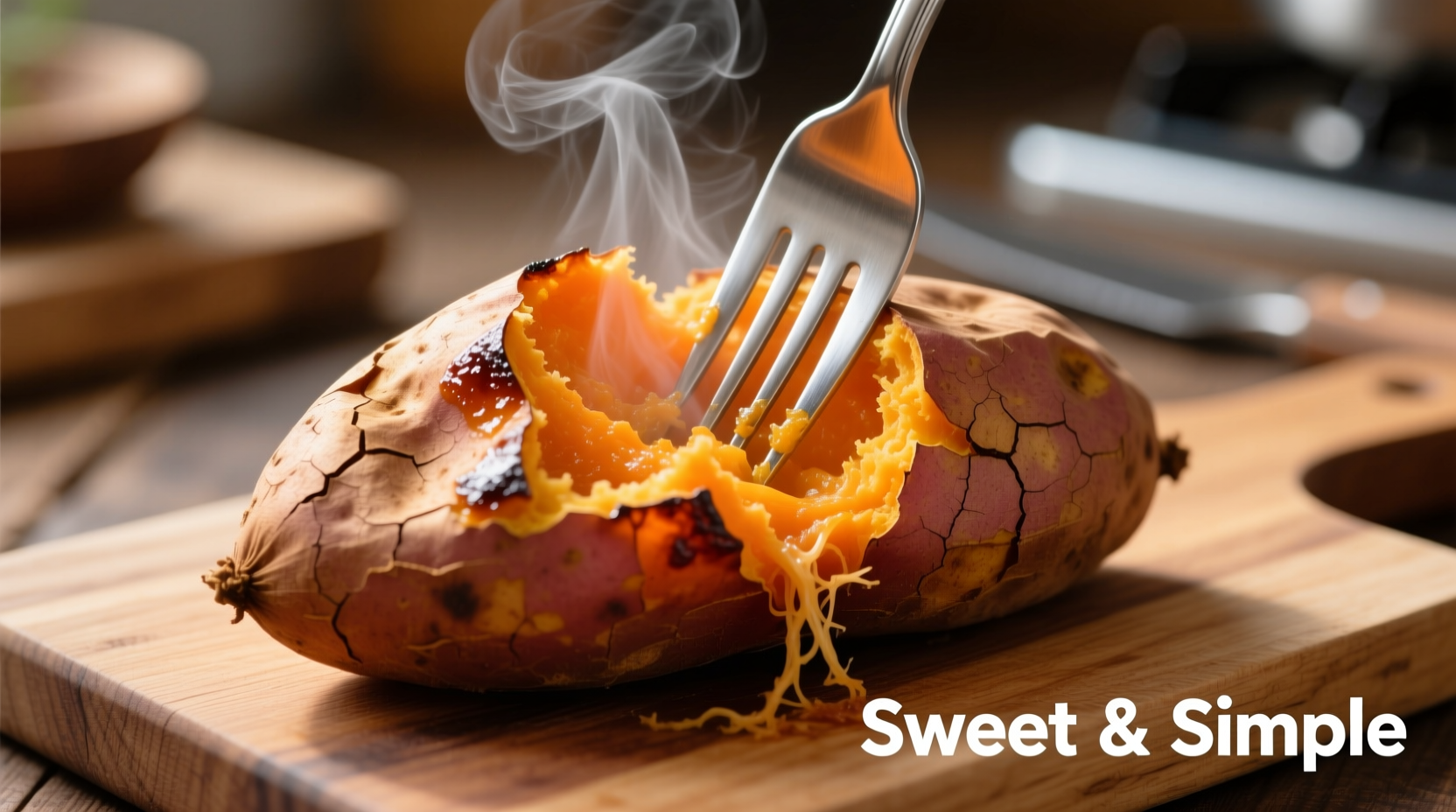For perfectly baked sweet potatoes, roast at 400°F (204°C) for 45-60 minutes. The exact time depends on size: medium sweet potatoes (5-7 oz) take 45-55 minutes, while larger ones (8+ oz) require 60-75 minutes. Always check for doneness by inserting a fork—it should slide in easily with no resistance.
Nothing beats the natural sweetness and creamy texture of a perfectly baked sweet potato. Whether you're meal prepping, making a healthy side dish, or preparing the base for a nourishing bowl, getting the timing right is crucial. Too short, and you'll end up with a dense, undercooked center; too long, and your sweet potato might dry out. Let's break down exactly how long to bake a sweet potato in the oven for flawless results every time.
Factors That Determine Baking Time
Your sweet potato's journey from raw to perfectly roasted depends on several key variables. Understanding these will help you adjust timing for your specific situation.
| Sweet Potato Size | Weight Range | Recommended Baking Time at 400°F |
|---|---|---|
| Small | 3-4 oz | 35-45 minutes |
| Medium | 5-7 oz | 45-55 minutes |
| Large | 8-10 oz | 55-65 minutes |
| Extra Large | 11+ oz | 65-75+ minutes |
Step-by-Step Baking Instructions
Follow these professional-tested steps for consistently perfect sweet potatoes:
- Preparation: Wash sweet potatoes thoroughly under cool water. Use a vegetable brush to remove any dirt. Pat dry with a clean towel.
- Piercing: Use a fork to pierce the skin 4-5 times. This allows steam to escape during baking, preventing potential bursting.
- Temperature setting: Preheat your oven to 400°F (204°C). This temperature balances thorough cooking with caramelization of natural sugars.
- Placement: Place sweet potatoes directly on the middle oven rack. For easier cleanup, position a baking sheet on the rack below to catch any drips.
- Baking process: Bake for the recommended time based on size. For even cooking, rotate the potatoes halfway through the baking time.
How to Tell When Sweet Potatoes Are Perfectly Done
Timing provides a good guideline, but the real test comes when checking for doneness:
- Fork test: Insert a fork or skewer into the thickest part. It should slide in with no resistance.
- Squeeze test: Using oven mitts, gently squeeze the potato. It should yield slightly under pressure.
- Internal temperature: For precise results, use an instant-read thermometer. Sweet potatoes are done at 205-212°F (96-100°C), according to USDA food safety guidelines.
- Visual cues: The skin will appear slightly wrinkled, and you might see some caramelized sugars bubbling out.

Common Mistakes That Affect Baking Time
Avoid these frequent errors that can throw off your baking timeline:
- Not accounting for oven variations: Home ovens often have hot spots or inaccurate thermostats. Use an oven thermometer for accuracy.
- Wrapping in foil: While some recipes suggest this, foil traps steam and essentially steams the potato rather than baking it, extending cooking time and affecting texture.
- Crowding the oven: Baking multiple potatoes too close together reduces airflow and increases cooking time.
- Skipping the preheat: Putting potatoes in a cold oven significantly extends total cooking time and affects texture.
Special Considerations for Different Oven Types
Not all ovens work the same way. Here's how to adjust for your specific appliance:
- Convection ovens: Reduce temperature by 25°F and check 10-15 minutes earlier than standard times. The circulating air speeds up cooking.
- Toaster ovens: Small capacity means less even heating. Position potatoes in the center and expect slightly longer cooking times.
- Older ovens: May have significant temperature variations. Check potatoes 10 minutes earlier than expected and rotate frequently.
According to culinary research from America's Test Kitchen, the size variation among sweet potatoes creates the most significant timing challenge for home cooks. Their testing revealed that two potatoes of similar length can vary by as much as 30% in weight, dramatically affecting cooking time. Always prioritize the weight-based timing guidelines over visual size estimates.
Serving and Storage Tips
Once perfectly baked, maximize your sweet potato experience:
- Let potatoes rest for 5-10 minutes after baking for easier handling and more even texture
- For creamier results, slice open immediately and add a small pat of butter or drizzle of olive oil
- Store leftovers in an airtight container in the refrigerator for up to 5 days
- Reheat in the oven at 350°F for best texture retention (microwaving can make them rubbery)
Perfect Pairings for Baked Sweet Potatoes
Enhance your baked sweet potato with these complementary flavors:
- Savory options: Black beans, avocado, Greek yogurt, cilantro, lime juice
- Sweet combinations: Cinnamon, pecans, maple syrup, toasted marshmallows
- Protein boosters: Grilled chicken, salmon, chickpeas, quinoa
When baking sweet potatoes for meal prep, consider that larger quantities require slightly longer cooking times due to reduced oven airflow. Space potatoes at least 1 inch apart on the rack for optimal results. The USDA Food Safety and Inspection Service confirms that properly baked sweet potatoes not only taste better but also maximize nutrient availability, particularly beta-carotene absorption.











 浙公网安备
33010002000092号
浙公网安备
33010002000092号 浙B2-20120091-4
浙B2-20120091-4